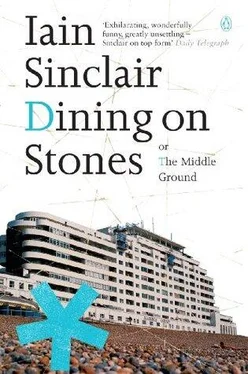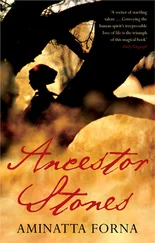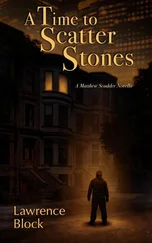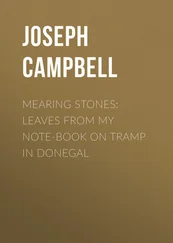Even Jacky had to eat. Think: Beckmann’s The Artists with Vegetables (1943). Grim concentration, contemplation of improbable foodstuff — which contemplates right back. Artists with trap mouths (gone in the teeth). More of a séance than a convivial interlude. Tense exiles, in an occupied country, waiting for the midnight tap on the door.
I met Jacky in the pasta place on the front. He was going hard at his second breakfast, a glazed pizza the size of a cardinal’s hat. He was sweating and swilling from a carafe of iced water. He flinched, pushed back his chair, tried to get up, as I approached his table.
‘No formality, Jacky. Long time.’
It didn’t take much to get him on the payroll. We never socialised, or made phone calls. Once a week we ate in silence, watching the window, manoeuvring to avoid the mirror. Jacky drew up his list of local prospects: decapitated vicar (got that), Aleister Crowley’s final boarding house (check), Brink’s-Mat bullion buried in builder’s yard (yawn), property scams and the BNP (dead TV), rumours about an Albanian plot to kidnap an unnamed celebrity at the White Queen Theatre (too preposterous for fiction), the woman at Pevensey Bay who had found the lost clerical head, while walking on the marshes. She might be prepared to talk.
That’s more like it, I thought, a trip out, fresh location.
‘Fix it for tomorrow. We’ll walk over.’
‘ Walk? ’ Roos flinched. He’d given up planes (research on crashes, terrorism, corporate malpractice). He wouldn’t go near a train (fifteen box files prophesying and confirming disaster, criminal incompetence). But he was wedded to his car, like a soft green snail to its shell. Antennae quivering in the breeze. Eyes shut.
‘Nine-thirty. By the fountain in front of the Royal Victoria Hotel,’ I said. ‘Be there. I’ll write it down for you. On the back of your hand.’
Sunlight in rough patches, like spilled solder. A grey sea. The curve of the bay, towards Bulverhythe and its wrecks, the small cliff at Bexhill. I sat drinking on my balcony. I had no idea how the disparate elements would fit together, but the heat was on me. Voices were beginning to whisper. Lies were warping towards their own fraudulent conviction.
I opened my great-grandfather’s book (gone in the hinges) and began to read.
There was a legend in the family that Arthur Norton’s portrait had been taken by Julia Margaret Cameron, in Ceylon, somewhere about 1877. Arthur, I knew, because I’d seen the letters they’d exchanged, was a friend and colleague of the botanical painter, Marianne North. Could he have met the Camerons through North? He had included Julia Margaret’s husband, Charles Hay Cameron, in his list of ‘Extraordinary and Eccentric Personalities Met During the Course of my Life as a Planter in Ceylon’. But although he took the story right back to the P&O liner and the voyage out — ‘ What do you think of Aden? ’ I said to a Yankee tourist whom I had observed stalking over the place for half a day without opening his mouth. ‘ What do I think of Aden? Why, I guess Satan must have somewhere to throw out his cinders! ’ — his tendency to digress, chase any detour that might lead to a terrible joke, meant that Cameron’s potted biography (after the style of John Aubrey’s Brief Lives ) never appeared. We have to make do with a procession of forgotten Scots, drunks, gamblers, rogues who went native or, worse, became Papists. The man had a fatal addiction to the picaresque.
I can’t confirm it, but I’m sure there was at least one meeting with old Charles Hay Cameron, a man who spent years in Freshwater (on the Isle of Wight) without quitting his room. He lived in a quilted blue dressing gown, brooding on his abandoned Ceylon Estates; white-haired, affable, preoccupied, up for a cameo as King Lear. I believe that, like my great-grandfather, Cameron lost a fortune in the coffee blight of 1875. Certainly, Arthur Norton would never touch the brown stuff after that date. We thought once that it was South African gold that ruined him and sent him off on his fatal expedition to Peru. On consideration, I believe it was something much closer to home.
In his journals Norton compares the fever of speculation in coffee with the Californian gold rush. I think he is describing a meeting with the venerable husband of Julia Margaret Cameron, a dire weekend party at Little Holland House in Kensington.
Yes! I well remember meeting in London an old gentleman who had suffered much by this wild rush. His reminiscences of Ceylon were evidently anything but pleasant to himself and certainly were not encouraging to those about to embark. To change the subject from coffee planting, a young friend, with antiquarian proclivities, enquired if there were any interesting relics there, such as tombs of the Kandian Kings. ‘I don’t know,’ was the curt reply, ‘but there are the graves of many a good English sovereign!’
A frayed postcard among the pages of Arthur Stanley Norton’s travel journal, his portrait: author as bookmark. A reproduction from Mrs Cameron’s albumen print? The slackness of focus, which we had taken for incompetence, might now be interpreted as the signature of the style, the intensity of gaze Julia Margaret inherited from her one lesson with David Wilkie Wynfield. Her cyclopean engine, the great camera box, driven close against the subject. Weak eyes, they reckon, a family trait among the Camerons. Damage inflicted on the print by the tropical climate.
Arthur’s bright eyes. Out of the sepia fog, cold blue.
Laughter lines. Despite the effort of endurance in sitting motionless in that heat. (Marianne North moaned about the noonday sun, a faint breeze stirring the breadfruit leaves.) Norton retains his good humour, Aberdonian scepticism for highborn ladies and their art. (A thumbprint floats over his right shoulder like an ectoplasmic double.)
Arthur’s beard, greying, was too well trimmed for Mrs Cameron’s purposes. More Professor Challenger than Alfred Tennyson as ‘dirty monk’. No cloak, a heavy jacket.
The trick she worked so often: mortality. A stare that empties the soul. Arthur’s barely suppressed smile breaks the spell. A failure. On the artist’s terms. Portrait of an Unknown Man (Ceylon) . 1875–9.
My challenge was to integrate the private, family story — unattributed photographic portrait, collapsed investments, fatal expedition, lost camera (with Peruvian film still inside) — with the material Jacky Roos was gathering for me in Hastings. And then to find a suitably Scottish form for this double tale. I rejected the alternate chapter technique, much abused by recent practitioners: historical pastiche interspersed with unconvinced passes at contemporary life. Those exhausted tropes: miraculously discovered journals, photos in shoebox, invented poems (in strict imitation of the period pieces they parody). Tick tock. Then now, now then. Until you end up with Nicole Kidman in a putty nose. The past as a website you can access for a small fee. Password: Metafiction.
And there was one other minor irritation: I was going mad. Nothing serious, a single, recurrent delusion. Another writer, with my name, my face, was trailing me; stealing my research and peddling it as documentary truth, a short film here, an essay there. That’s why I left London. The creature had ruined my reputation, invading and capturing (so far as the critical consensus was concerned, Radio 4, Channel 4, the four broadsheets) my territory. He had forced me to flee to the coast, to begin again from scratch. At my age. Knowing nothing. No contacts. No money. And the fear that one morning he would be there, grinning, standing over my mattress, watching me as I slept.
Читать дальше












